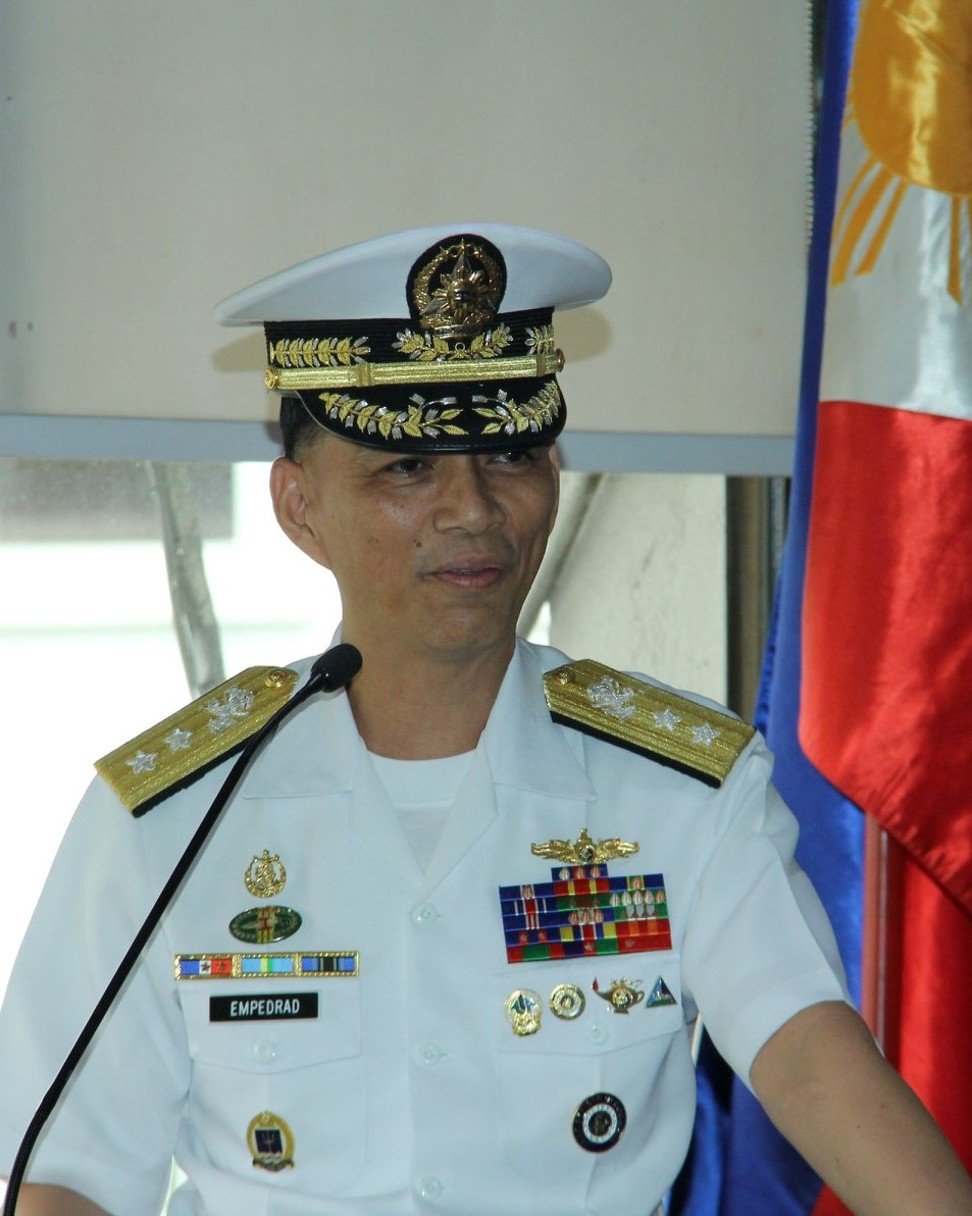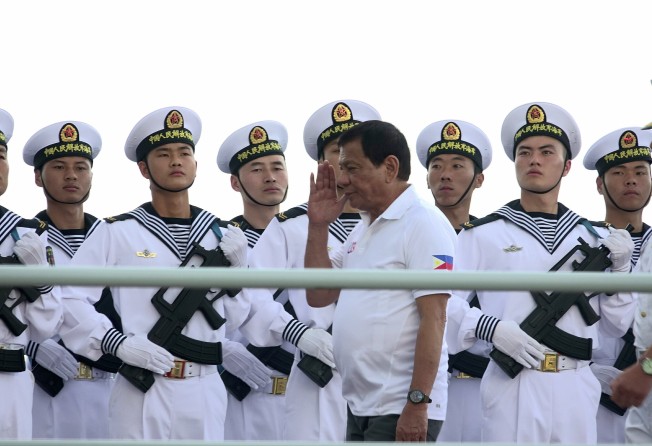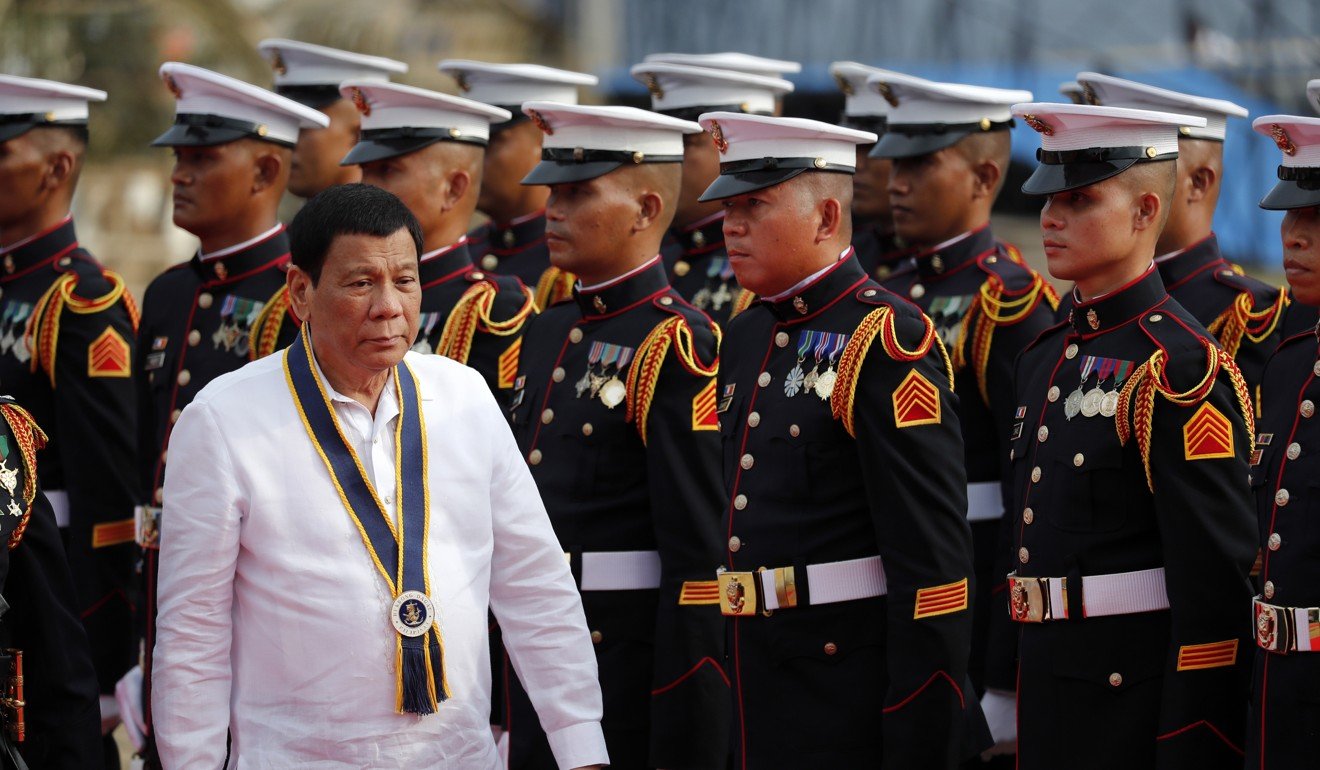
Philippines modernises its ‘weak’ navy as China muscles closer
After the second world war, the Philippines had one of the most powerful navies in Asia. But over the past 60 years, the Philippine Navy became one of the weakest as the government focused on internal security threats

The Philippine Navy is one of the weakest maritime defence forces in Southeast Asia, leaving the sprawling island nation of over 100 million people vulnerable to threats like China’s assertiveness in taking control of disputed territory, according to senior officers, including the top commander.
“A few days ago, we were surprised by the reports that the Chinese have embedded anti-ship missiles and anti-air missiles in three critical island features – Subi, Fiery Cross and Mischief Reefs,” a Philippine naval officer told a maritime security seminar in Manila in May.
He went on to say the “logical next step” was deployment of J-11 strike aircraft with a range of 1,500 kilometres, bringing almost the entire Philippine archipelago within striking distance.
“We have to upgrade the capability of the Philippine Navy so that we can protect our maritime waters because we are an archipelagic nation,” Philippine Navy chief, Rear Admiral Robert Empedrad told reporters afterward.
“With a weak navy, we cannot protect it.”

With more than 7,600 islands, the fifth-longest coastline in the world, and territorial waters seven times greater in size than its land area, the Philippines should be “a big maritime nation,” Empedrad said, adding it once was.
After the second world war, the Philippines had one of the most powerful navies in Asia.
But over the past 60 years, the Philippine Navy became one of the weakest as the government focused since the 1970s on internal security threats posed by communist rebellions and Muslim insurgents, while relying on the US military to provide protection against external threats.
But that US shield began to crumble when the Philippine government in the 1990s ordered the closure of Clark Air Base and Subic Naval Base, respectively the largest US air force and naval facilities in Asia.
“Six decades later, we are one of the weakest (navies), even in the Southeast Asian region,” Empedrad said.

“Maritime nations like Malaysia, Indonesia, Japan and Singapore, and even Vietnam and Myanmar, have upgraded their naval capability, while the Philippine Navy went into obsolescence,” Empedrad said during the navy’s 120th anniversary celebration on May 22.
In 2006, the Philippine Navy began pursuing a plan to again become “strong and credible” by 2020 through modernising its equipment and improving training of its officers and personnel.
Under President Benigno Aquino, the navy started acquiring more modern equipment, such as AW-109 helicopters, landing craft vessels donated by the Australian government, Hamilton class cutters from the United States, and multi-purpose attack craft.

But during Aquino’s presidency, China started to aggressively assert its claims in the South China Sea by driving away Filipinos conducting energy surveys in the Reed Bank, fishing at the Scarborough Shoal and in disputed areas of the Spratly Islands, and even Philippine coastguard vessels patrolling the country’s exclusive economic zone.
And when Manila filed an arbitration case against Beijing in 2013 over disputed features in the South China Sea, China reacted by ramping up reclamation activities in disputed reefs while rejecting the territorial dispute settlement process allowed under the United Nations Convention on the Law of the Sea, to which both countries are signatories.
In 2016, the Philippines won the case as the arbitration court ruled that China’s so-called nine-dash line theory – upon which China’s claims to almost the entirety of the South China Sea rests – had no legal basis.
Chinese bombers including the H-6K conduct takeoff and landing training on an island reef at a southern sea area pic.twitter.com/ASY9tGhfAU
— People's Daily,China (@PDChina) May 18, 2018
In recent weeks, international concern over China’s activities in the South China Sea have spiked again on news of their militaristic nature.
The reports include the landing of H-6K bomber planes on Woody Island in the Paracels; of other military planes landing on reclaimed land in Subi Reef, which is only 12 nautical miles from the Philippine-occupied Thitu Island; and on Mischief Reef, a feature clearly adjudged by the arbitration court to belong to the Philippines.
China has also installed military jamming equipment on Mischief Reef and Fiery Cross Reef, and anti-ship cruise missiles and surface-to-air missile systems.
But at the navy’s anniversary celebration, Empedrad described actions underway to bolster the nation’s maritime defences.
These include the acquisition of five TC90 aircraft from Japan, and of the navy’s “very first missile capability”, mounted on multi-purpose attack craft.

“The aircraft has longer range that can effectively cover our vast maritime waters” in support of the nation’s land-based monitoring stations, Empedrad said of the TC90s from Japan’s Maritime Self-Defence Force.
He also described the Israeli-built missile system as “very accurate”, providing strong deterrence.
“I’m sure enemies that ply our maritime waters will be threatened.”
A Pohang Corvette from South Korea may also be delivered later this year; the Philippine Marine Corps will receive amphibious attack helicopters early next year; two anti-submarine warfare helicopters with torpedoes will be operational next year; and two missile frigates are expected in 2020, the naval chief said.
While praising those acquisitions, former national security adviser Roilo Golez said still more must be done to enable the Philippine Navy to effectively guard the nation’s territorial waters.
But he noted the difficulty given that the size of the Philippine economy, at about US$400 billion, is just a little more than twice what China will spend in 2018 just on its military.